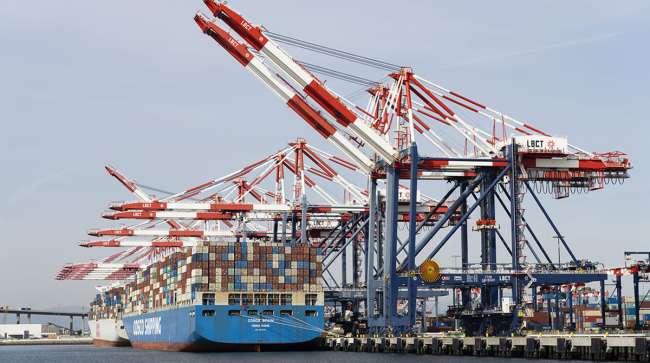Recent Cargo Activity at Long Beach Port
最近,长滩港的货运量出现下滑,但人们乐观地预测,货运量将在不久的将来恢复。
Cargo Volume Decline
During June, cargo processed at the port plummeted by 16.4%, totaling 704,403 twenty-foot equivalent units (TEUs). The drop reflects decreasing trends in both imports and exports, which saw declines of 16.9% 和 10.9%分别为
| 类别 | June 2024 TEUs | Change from Last Year |
|---|---|---|
| Overall Cargo | 704,403 | -16.4% |
| Imports | 348,681 | -16.9% |
| Exports | 87,627 | -10.9% |
| Empty Containers | 268,095 | -17.4% |
Factors Influencing Cargo Movement
Despite the dip in numbers, port officials are hopeful for a rebound in July, attributing this optimism to the ongoing pause on tariffs and preparations for the upcoming retail cycles of fall and winter. As Mario Cordero, the CEO of the Port of Long Beach mentioned, there’s a strong expectation for a surge in cargo activity as retailers stock up for the busy season.
Cordero stated, “We’re anticipating a cargo surge in July, as retailers stock up on goods ordered during the 90-day pause placed on tariffs.” Such anticipations play a significant role in logistics planning.
Preparedness for Increased Cargo
The port is gearing up for the possible influx of cargo with advanced digital services, like the Supply Chain Information Highway, which enhances visibility and logistics efficiency. Bonnie Lowenthal, the harbor commission’s president, highlighted that both dockworkers and marine terminal operators are ready for the expected fluctuations in cargo volume.
Infrastructure Improvements
Long Beach is continuously investing in infrastructure projects aimed at facilitating smoother cargo movement to maintain its reputation as the “Port of Choice.” This includes initiatives for on-dock rail systems and sustainable transitions toward a greener port operation.
Comparative Insights from Neighboring Ports
Interestingly, while Long Beach faced challenges, the Port of Los Angeles recorded an impressive 8% 增加 in cargo volume for June, marking the busiest June ever in its history, processing 892,340 TEUs. This disparity can often provide valuable insights for logistics operators.
Trends in Dwelling Times
According to the Pacific Merchant Shipping Association, June saw a marked improvement in rail-destined cargo dwell times, dropping to an average of 3.29 days—the lowest since December 2021. This significant decline highlights improvements in inland cargo movement and enhanced supply chain coordination, making logistics more efficient.
Local Trucking Efficiency
Local truck dwell times remained steady, averaging 2.55 days, signifying that adequate trucking capacity is being maintained to support operational needs at the ports effectively.
Outlook for Future Operations
As Natasha Villa, the external affairs manager of the Pacific Shipping Association noted, the latest trends owe their success to strong coordination among terminal operators, railroads, and trucking services within the twin-port complex.
Conclusions and Implementation in Logistics
Analyzing the port current dynamics, it’s clear that even amidst challenges, there’s a notable resilience and adaptability within the logistics framework. It brings to light the continuous need for innovation and efficiencies in the shipping and cargo sectors.
Personal experiences often outweigh reviews when determining logistics strategies. At GetTransport.com, users can conveniently book cargo transportation at competitive global prices. This platform empowers clients to make informed decisions, eliminating unnecessary expenses and disappointments in logistics planning.
As these developments unfold in the port operations and logistics industry, it becomes crucial for stakeholders to stay informed. Begin planning your next cargo and logistics needs, ensuring efficiency and cost-effectiveness by utilizing GetTransport.com. This platform remains committed to providing reliable and affordable cargo transportation solutions, simplifying logistics for its users.

